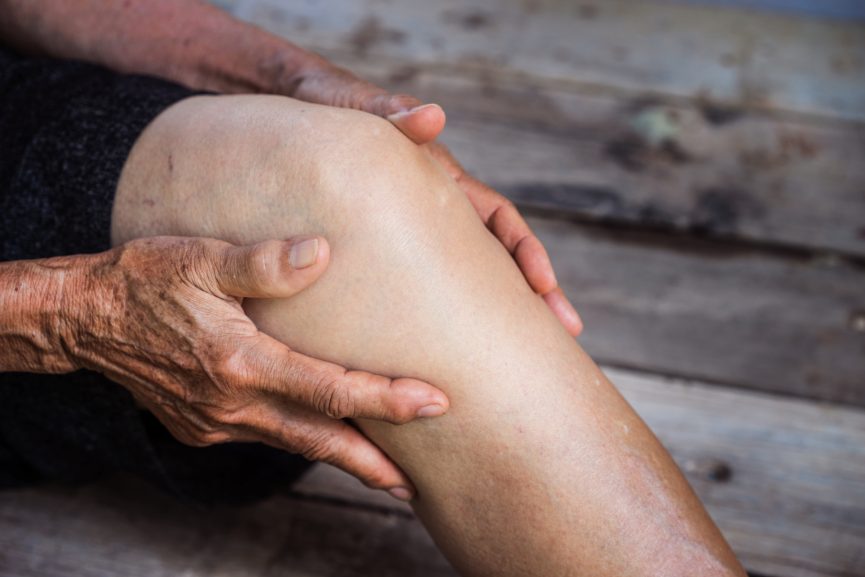Did you know that around 24 percent of all U.S. adults suffer from some type of arthritis?
Arthritis is a disease that can make doing things you love difficult. Whether you have trouble moving or are experiencing joint pain or stiffness, arthritis certainly puts a damper on the day sometimes.
If you’ve been diagnosed with osteoarthritis, it’s time to learn how to get started living with the disease. Keep on reading to learn more about the disease and how to start living with osteoarthritis to make the best of it!
What Is Osteoarthritis?
Articular cartilage lines the majority of the body’s joints. This is a living piece of gristle that develops from a bone’s tip where it rubs up against another bone. It can absorb shocks, has a shiny, slick surface, and can heal itself after getting hurt. Diseases of this articular cartilage are referred to as arthritis in part.
The articular cartilage can be impacted by two main disease types. The first type of arthritis is inflammatory, like rheumatoid arthritis. The articular cartilage is mistakenly viewed by the immune system in this disease as a foreign invader. It is attacked, leading to painful inflammation.
The second disease develops when the articular cartilage starts to degenerate and loses its capacity to heal from micro-injuries (repeatedly very minor injuries). Osteoarthritis causes this. Movement-related pain is brought on by the articular surface’s gradual abrasion and roughening.
An x-ray may reveal changes to the underlying bone as a result of the articular cartilage’s degeneration.
Osteoarthritis appears to favor some joints, such as the knees and the hips. It is also more likely to occur in a joint that has previously sustained a serious injury as well. To deal with a fracture involving the articular cartilage, good bone alignment is helpful.
Symptoms of Osteoarthritis
The worst symptom is pain. Pain first appears during movement and may be felt inside the joint or nearby. Pain may eventually become more frequent when you’re not moving.
Even though there may not be much of a connection between pain and joint dysfunction, the latter is possible.
When this happens in a finger joint, it is referred to as a Heberden node. Damage to the gliding articular surface may trigger a reaction in the underlying bone that results in bony enlargement.
A person with osteoarthritis may also experience stiffness, creaking, instability, and weakness near the affected joint.
Warmth and swelling that are accompanied by pain are the hallmarks of inflammatory arthritis, including rheumatoid arthritis, and are referred to as synovitis. Osteoarthritis also sometimes causes this to some degree.
Osteoarthritis Treatments
Losing weight may also help osteoarthritis of the hips and knees (joints that bear weight). It does so by easing the strain on the affected joints. This works to slow the disease’s progression.
Strengthening the muscles that surround joints can aid in joint protection. Exercises under the direction of a physiotherapist might be necessary.
Joint misalignments can be cured by wearing cushioned shoes or special insoles.
Controlling pain is crucial. Anti-inflammatory medications like Voltaren and Naprosyn have no distinct advantages over ordinary painkillers. This is because osteoarthritis is not inflammatory arthritis. Plus, they may have more severe side effects.
Artificial joint replacements may improve the symptoms of osteoarthritis in the knees and hips. However, they are typically only used in severe cases of end-stage disease. Before a joint replacement, other surgical procedures are considered. These include arthroscopy (a joint telescope), osteotomy (the surgical realignment of bones to change the loading on joint surfaces), and fusion of painful joints to create a solid, immobile, and painless joint (arthrodesis).
Anti-inflammatory joint injections with steroids are less effective than they are for rheumatoid arthritis and, in some cases, can hasten the degeneration of articular cartilage.
Patients with osteoarthritis may experience different symptoms and outcomes depending on other factors like anxiety, depression, and a lack of social support. A support group may make the person feel less disabled.
Living With Osteoarthritis
Now that you know about the disease, it’s time to get your life back.
When your arthritis hurts, exercise may be the last thing you want to do. However, numerous studies demonstrate that one of the best ways to enhance your quality of life is through physical activity.
Your energy is increased by exercise. Additionally, it can help keep your joints flexible while strengthening your muscles and bones. To develop stronger muscles, try resistance training.
Joints afflicted by arthritis are supported and protected by your muscles. Engage in aerobic exercise to burn calories and lose weight.
Weight-bearing joints like your knees, spine, hips, ankles and feet are put under excessive strain when you are overweight. Arthritis symptoms can be lessened by weight loss. Make little adjustments every day to help you eat less and expend more calories.
Hot compresses help to increase blood flow, which reduces pain and stiffness. Cold compresses lessen edema. If you want to find out what works best for you, try using heat instead of cold packs.
Now You Know About Arthritis Management
Being an arthritis sufferer is difficult. It can be beneficial to find others with whom you can converse and exchange ideas. Look into local or online support groups for arthritis.
Until then, you now know some tips for living with osteoarthritis. Arthritis management can start with small steps until you can work yourself up to more exercise.
For joint and tendon pain solutions, learn more about our PRP therapy at the link!

